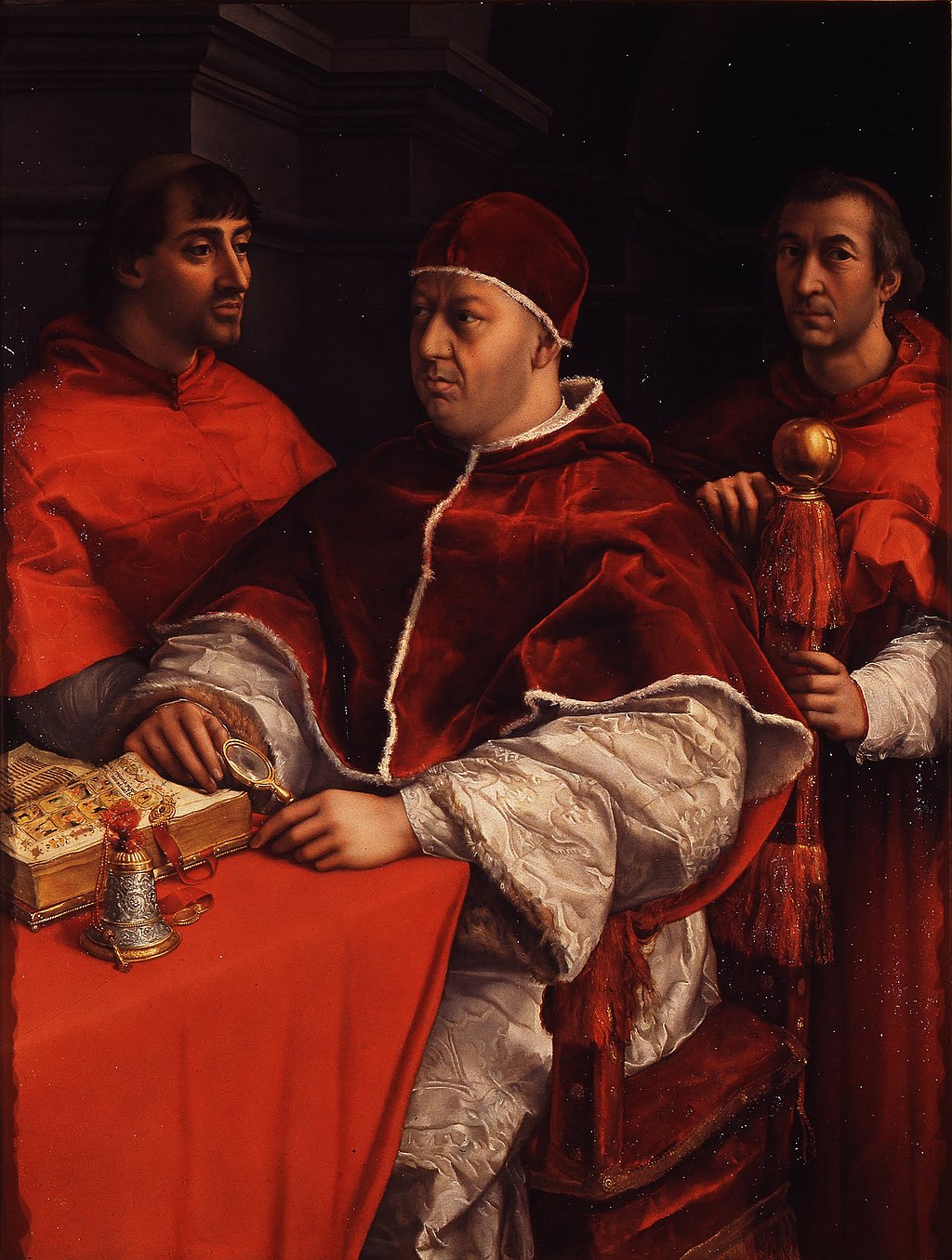
The scientific committee of the Uffizi has collectively resigned in protest over the Florence museum’s decision to loan out Raphael’s portrait of Pope Leo X. The historic work is currently on view in Rome, despite the expert group’s recommendation that the painting was not in a state to be moved.
The mass resignation occurred yesterday, the day after the press preview for the highly anticipated show at the Scuderie del Quirinale in Rome, called “Raphael.” As a part of the celebrations to mark the 500th anniversary of Raphael’s death, the institution is set to open the sweeping exhibition to the public on March 5 (it will remain on view through June 2). It’s is a cornerstone of yearlong celebrations honoring the Renaissance master, and 70,000 tickets have been sold ahead of the opening. Around 50 of the 200 pieces in the show are on loan from the Uffizi; the rest hail from an assortment of 52 other institutions.
“The exhibition cannot do without a masterpiece, which is in excellent health and perfect condition to travel to Rome,” said Eike Schmidt, director of the Uffizi, in regard to the Pope Leo X portrait, according to Schmidt’s statement contradicts the resignation letter from the scientific committee, which includes the scholars Claudio Pizzorusso and Donata Levi, as well as historian Tomaso Montanari and art dealer Fabrizio Moretti.
“Today we have learned from the press that, contrary to what was decided at the committee meeting on December 9, the painting has been loaned and is already at the exhibition site in Rome,” they wrote. “We are fully aware of the Committee’s consultative function, but keeping us busy for months making lists that were later blatantly ignored undermines the very existence of the Committee.”
The committee members said they hoped that their resignation “makes it inevitable to rethink and redefine the role of the Scientific Committees in the government of autonomous museums.”
Further muddling the controversy, other experts appeared to have conflicting opinions. According to , Marco Ciatti—the head of the Opificio delle Pietre Dure, where the portrait was restored—also supported the transfer of Raphael’s painting to Rome, echoing Schmidt. “After the restoration, Raphael’s Leo X is in perfect condition, in excellent condition,” he said, “and [is] absolutely capable of going to the Scuderie del Quirinale without any risk to its ‘health.’”
Even if the Uffizi had held on to the Pope Leo X masterpiece, European fans of Raphael would have ample opportunities to see his canvases this year. For the 500th anniversary of his death, Italy and other Western nations have planned a slew of exhibitions. There are shows planned for the National Gallery in London in October, and Berlin’s Gemäldegalerie has a series of Raphael’s Madonnas on view until spring.
Source: Exhibition - news.artnet.com



